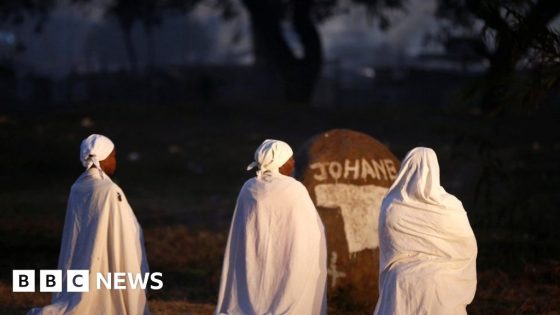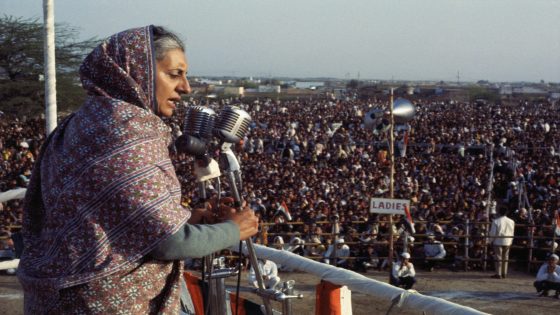Some of Africa’s great apes — humanity’s closest cousins — face death and disruption as the planet warms, according to new research.
The findings, published today in the academic journal PLOS Climate, suggest climate change will create dangerous conditions in hundreds of ape habitats across the continent.
“They’re facing a lot of threats that are much more imminent than climate change,” said Stefanie Heinicke, a postdoctoral researcher at the Potsdam Institute for Climate Impact Research in Germany.
“But this will add an additional stressor — and in some habitats, it already has.”
Heinicke, alongside African climate researchers, looked at 333 sites where African apes live, finding that all of them had experienced temperature increases. Using projections of a world warmed to both 2 C and 3 C above pre-industrial levels, the team found these habitats would also see more extreme impacts.
Heinicke’s research points to more days where heavy rainfall would hit these habitats. As she explained to CBC News from Potsdam, there would also be an increased number “of consecutive dry days, so days where repeatedly you don’t have any rainfall.”
Feeling it across generations
The research also found that some of these ape populations would be more exposed to extreme climate events like wildfires, drought, cyclones and heat waves — events that have the potential to not only reduce food security but physically break up groups, as seen during flooding from intense rainfall.
“When you have really large groups, it potentially cuts off individuals from other individuals that they might know,” explained Ammie Kalan, a primatologist at the University of Victoria. She says this isolation breaks down the social networks of these apes, and that the longer these extreme climate events last, the worse the damage to the animals.
There are concerns that COVID-19 could undermine 40 years of conservation efforts to protect Uganda’s mountain gorillas. CBC’s Margaret Evans, Lily Martin and Jean-Francois Bisson went to the Bwindi Impenetrable National Park to see the challenges of balancing tourism and protecting the animals.
“It suggests generational trauma that’s going to happen to these ape populations,” Kalan told CBC News. She said the deaths of older members can affect the entire group’s resilience.
“If you cut out whole generations, you lose these knowledgeable individuals that have the potential to provide that kind of safety net that can help out those younger individuals.”
Indirect pressure
The greatest threat to ape populations in Africa is habitat loss, and the pressure of one extreme climate impact — crop failure — could feed into that.
The Intergovernmental Panel on Climate Change’s latest report says global warming will drive up heat waves and drought in Africa and is already reducing crop yields and productivity.
“What you see, as a result of humans then trying to survive in these desperate circumstances, is that they turn to the forest for resources,” Kalan said, describing it as a source of food and fuel such as charcoal.
For Rachel Ashegbofe Ikemeh, founder-director of the South-West/Niger Delta Forest Project, climate change can make a human-caused situation worse.
“When you talk about wildfires,” Ikemeh said, “we’ve seen a lot of that around or near my project site in Ise Ekiti — where we are preserving the last stronghold of chimpanzee populations in southwestern Nigeria.”

Ikemeh, who has been in conservation for almost 20 years, gave an example of wildfires started during the dry season by farmers clearing their land.
“But what spreads wildfires in these environments is the heat conditions,” she told CBC News from Durban, South Africa.
“When it’s dry, it makes [it possible for] a small fire that a farmer sets in his small farm to spread to several hundreds of acres of land.”
A 1-degree difference
Heinicke says that because the primary threats to apes are deforestation and hunting, there hasn’t been a strong climate change argument made in conservation efforts. But there’s value, say experts, in showing how both 2 C and 3 C differences would affect ape populations.
“These general projections can help to basically support why mitigation efforts need to happen,” Kalan said, adding that the 2 C scenario will be less severe on great apes.

Bella Lam, CEO of the Jane Goodall Institute of Canada, says any solutions need to consider what’s pushing communities to encroach on ape habitats.
“You cannot protect chimpanzees without looking at … the same drivers impacting poverty, impacting food insecurity, gender equality,” Lam said. “All these things that impact the development of the communities sharing, really, the same ecological space.”
Source Agencies




